You might be missing out on safety lights, extra storage, and more.
14 Useful Features You Didn’t Know Your Car Might Have
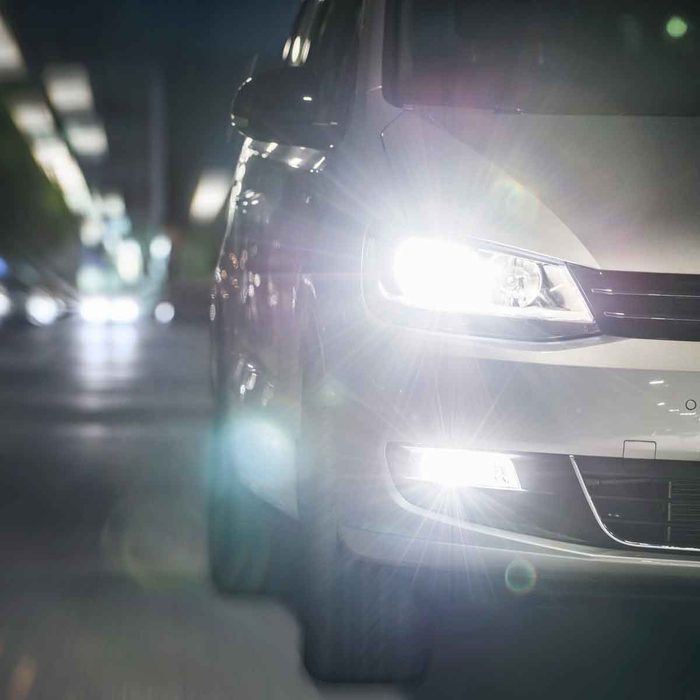
Engineers squeeze all kinds of extras into cars that many of us never realize. Some of them are minor, like extra storage compartments tucked here and there, or an arrow to remind you what side of the car the gas cap is on. Others are more major, like drowsiness detectors and road condition indicators.
“Most cars today also tell you when to get an oil change,” says Melanie Musson, an auto industry expert with Autoinsurance.org, “ with manufacturers recommending to follow the oil change alert on your dash rather than the standard 3,000-mile interval oil change shops recommend.”
Here are some other features you might not know your car has, just waiting to help you out and make your day better and safer.
Front Fog Lights
Designed to illuminate the road closely around the vehicle while driving in low-visibility conditions, fog lights are an extra set of small illuminators below the headlights and tail lights. Almost all vehicles have them in the back, but not all do in the front, where they’re most helpful to the driver. They give the driver more visual reference during foggy or snowy conditions when the road ahead is hard to see. Not sure your vehicle’s headlights are aimed properly? Learn how to adjust headlights.
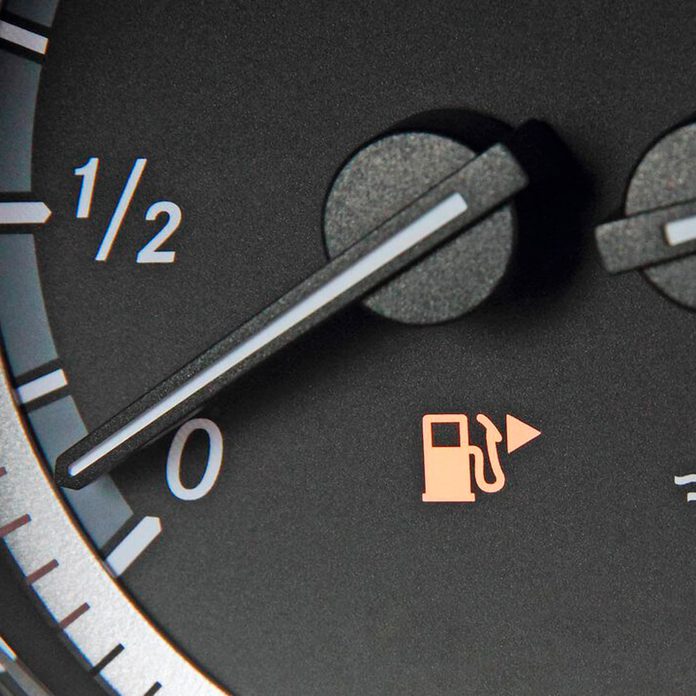
Gas Tank Locator
How many times have you pulled into a gas station in a rental car and been hit by the sudden realization that you have no idea which side the gas tank is on? Guessing wrong is more than annoying—you either have to execute a fancy maneuver or try to pull the hose all the way around to the other side of the car. Even if you’ve logged many years behind the wheel, driving cars that were yours, borrowed, or rented, as well as (the worst) rented moving trucks, you may be blown away to learn that there’s a tiny arrow next to most gas gauges that shows which side it’s on.
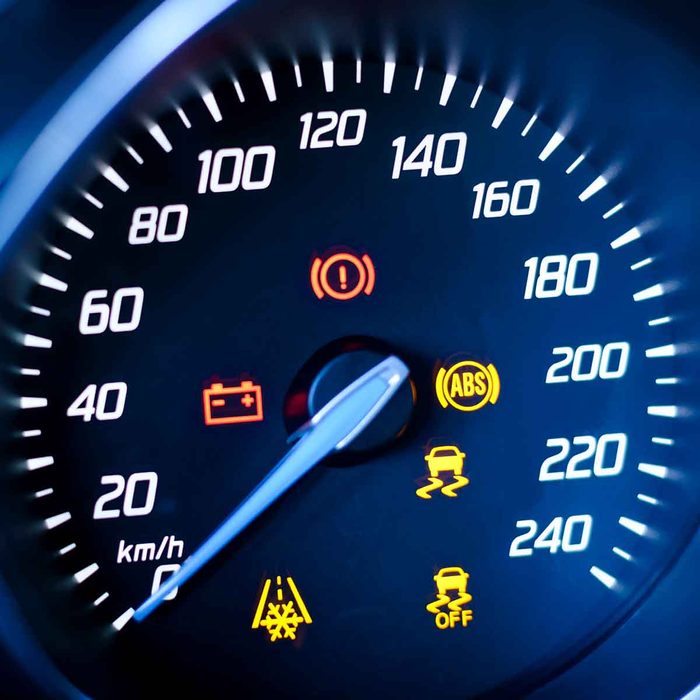
Road Condition Indicators
Gas cap location isn’t the only cool thing you’ll find if you keep an eye on the dashboard of a new car. The next time you’re driving in winter, you may notice an odd dashboard light that looks like a road with a snowflake on it. It’s meant as a warning that the temperature outside is low enough for roads to freeze, according to mycardoeswhat.org, a website created by the National Safety Council and the University of Iowa.

Stability Control
Driving on wet or icy roads, you might occasionally see a dash light flash that shows a tiny car skidding around. That’s an indicator that your stability control feature is engaged briefly to keep you on the straight and narrow (literally). All cars sold in the United States since 2011 have been required to have stability control, according to mycardoeswhat.org—sensors can tell if the car is turning too far (getting ready to spin out) or not turning far enough (with a possibility of plowing off the road), and it engages the brakes on one or more wheels to control the turn. If you see a button in your car that lets you turn off stability or traction control, ignore it. The only time you would need to turn the feature off is when you’re trying to get the vehicle unstuck from deep snow, according to mycardoeswhat.org.
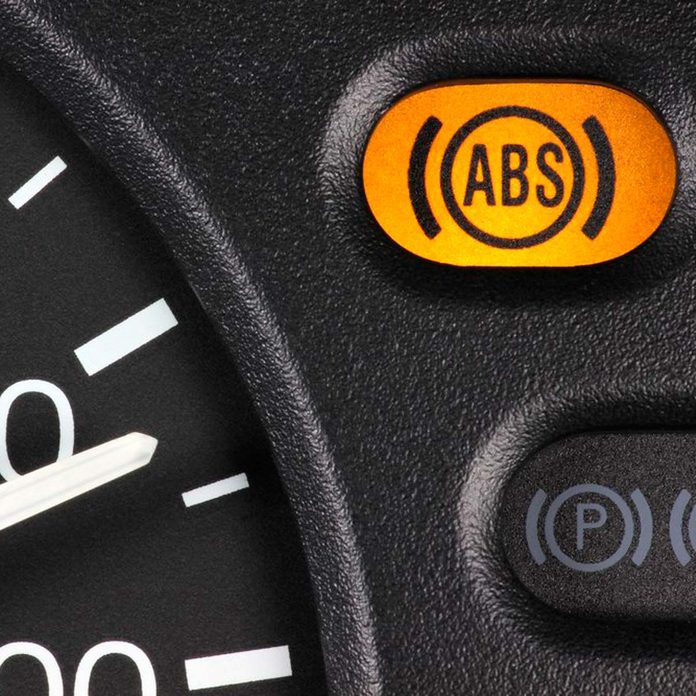
Anti-Lock Brakes
You probably know you have an anti-lock braking system (ABS), particularly if you ever drove a car without it—Mercedes started selling cars with ABS in 1978, and most other manufacturers got on board in the 1990s. That’s why, if you took driver’s ed in the 1980s or early 1990s, you may have learned to pump the brakes quickly if you needed to stop fast. If you just stomped on the non-ABS brake suddenly, the car’s wheels would lock up and you could slide without being able to maintain any control. ABS pumps the brakes for you, a lot faster and with the help of sensors that can tell which wheels need to be freed momentarily so they can regain traction. ABS is necessary for stability control, so all cars sold in the United States are now equipped with it.
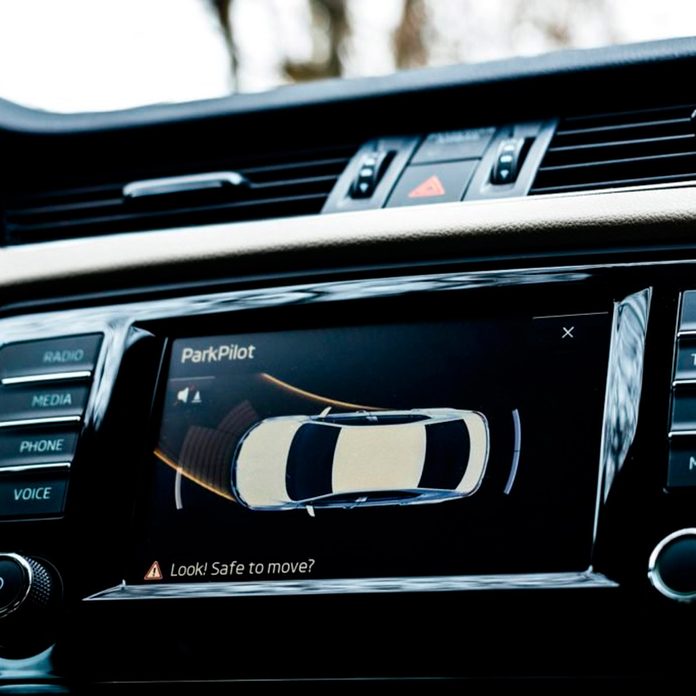
Computer Driving Assistance
Newer and more high-end cars can now help you with many of aspects of driving. Optional safety features include parking assistance (which will do the parallel parking for you), downhill assist (which automatically keeps your car from accelerating too much as you descend), and sensors that can detect bikes, pedestrians, and other hazards. Some cars will even brake for you if you don’t react in time to avoid a collision (automatic emergency braking). Be sure you’re fully aware of all the features your car offers so you’re not surprised or confused by an unfamiliar indicator light or—even more disconcerting—by your car stopping or slowing down when you haven’t hit the brakes yourself.
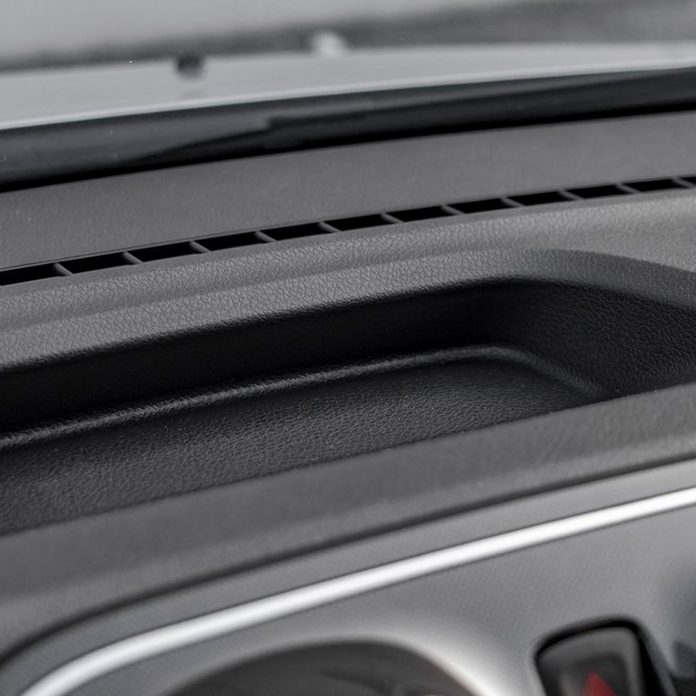
Storage
Car companies like to squeeze little extra spaces in wherever they can, and some are super-useful if you know they’re there. Toyota Highlanders have a great shelf in the middle of the dashboard that’s perfectly placed to hold cell phones and sunglasses. The Dodge Journey has a compartment under the passenger seat, as well as two cubbies under the floor behind the front row—they’re removable bins, so if you fill them with sodas and ice or use them to transport dirty shoes, you can pull them out to clean them later. The Land Rover Discovery has a storage area for hiding valuables behind a climate control panel.
Also, find out what a frunk is and what you can do with it if your next car has one.
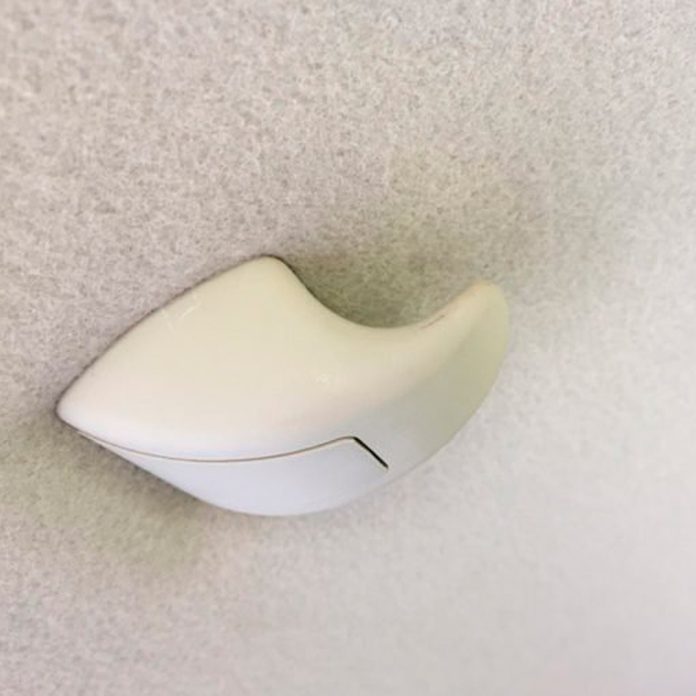
Hooks
The big space in the back of an SUV often feels like a free-for-all—groceries, sports gear, and that bag of old clothes you keep meaning to donate seem to roll around with every turn you make. But it’s possible to organize your car. Did you ever notice little plastic hooks back there, a couple of feet above the floor? Those actually have a purpose—you’re meant to hang shopping bag handles from them so the bag full of eggs doesn’t topple over. Some cars have them behind the front seats as well. Nissan even has one in the front passenger seat that the company calls a curry hook because it can be used to keep your takeout bags upright. Plus, most cars have hooks above the rear doors—you can hang your coat or dry-cleaning up there to avoid wrinkling.
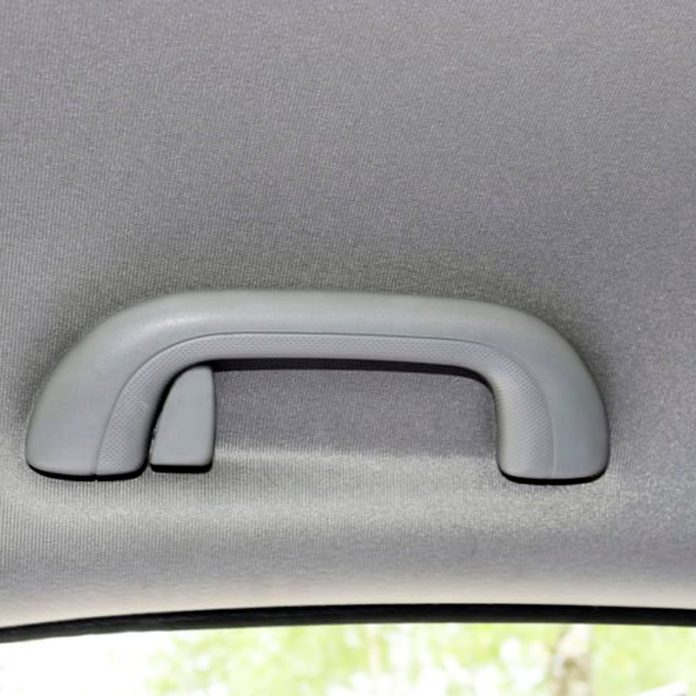
Grab Handle
Above each car door, you’ll usually find a handle. You’ve probably always assumed that the purpose of those is to give you something to hold while your brother/grandma/driver’s ed student takes corners a little faster than you prefer. But these handles are actually very useful to someone with limited mobility trying to get in or out of the car—a wheelchair user or anyone lacking leg strength can hold on for stability while maneuvering into a comfortable position. They work similarly to bathroom grab bars.
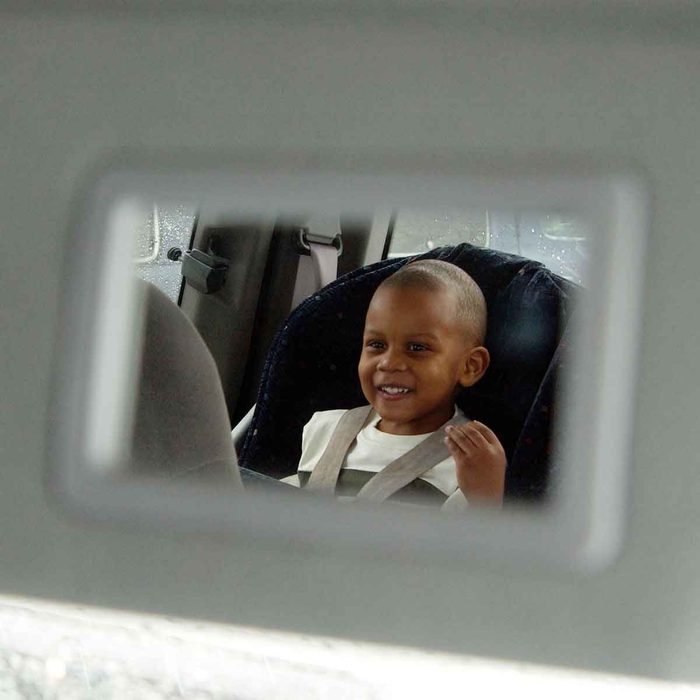
Conversation Mirror
Lots of mini-vans and some crossover SUVs have a small convex mirror mounted overhead that lets the driver keep an eye on the goings-on in the back seats. It often pulls down from a compartment mounted near the rearview mirror, and it will help you keep tabs on your kids, dogs, and whatever else is along for the ride without having to take your eyes off the road for an extended period.

Enhanced Soundproofing
Listening to some good music in your car? Modern soundproofing makes it a lot easier to hear all the subtleties of an orchestral piece, as well as the not-so-subtle whining from your kids in the backseat. Makers are not just adding extra layers of insulation around engine and suspension mounts—some are also adding active noise cancellation, like the type you can get in headphones. The Buick Enclave Avenir SUV uses the company’s QuietTuning technology, which means the doors are triple-sealed, the windows have special glass, and the sound system creates waves that counteract the sound waves coming from the engine and road noise. You won’t miss it when your kids ask, “Are we there yet?”
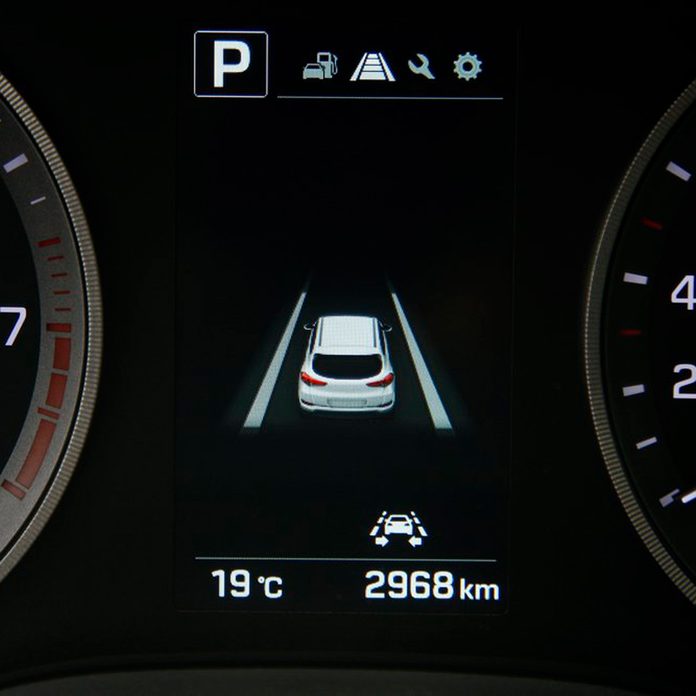
Drowsiness Detector
According to the New York Times, sleepy drivers caused more than 800 accidents in 2015. Even with enhanced car safety measures like stability control and collision sensors, a driver who is dozing off behind the wheel is a hazard. Makers including Audi, Mercedes, and Volvo are solving the problem with detection systems that monitor how well you’re staying in your lane, along with how long you’ve been driving—a coffee cup icon will pop up on your dash if the car thinks it’s time for a break. But manufacturers are also working on sensors that monitor a driver’s heart rate and breathing, and even track your posture and eye movements, so it can warn you well before you’re drifting off to sleep (and off the road).
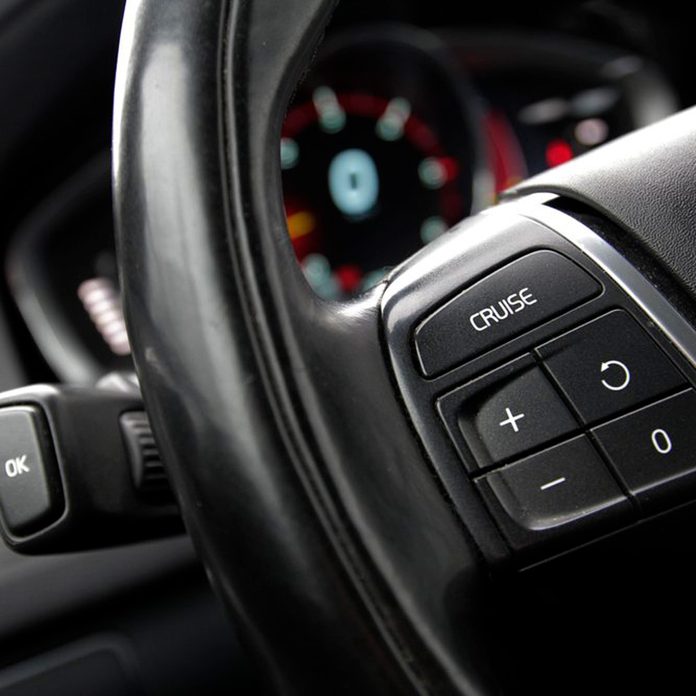
Adaptive Cruise Control
If you want a little taste of what self-driving cars will be like, engage your adaptive cruise control. Unlike old-fashioned cruise control, which lets you lock in a steady speed without having to keep your foot on the gas pedal, new systems use lasers, radar, and/or cameras to adjust your driving speed so it matches the car in front of you, according to Consumer Reports. The publication reports that 75 percent of owners who used adaptive cruise control were satisfied with it.
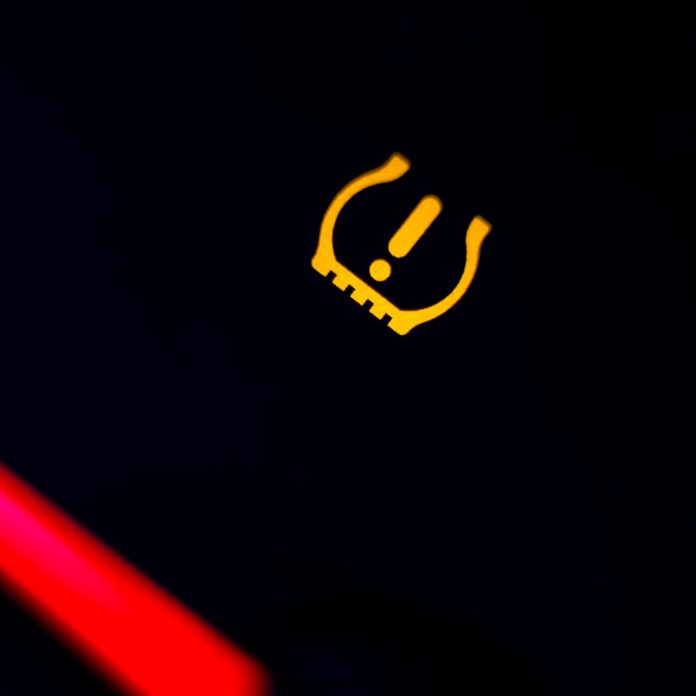
Tire Pressure Monitor
Since 2008, all new cars have been made with sensors that monitor your tire pressure and let you know if you’re low on air by turning on a dashboard light that usually looks like a cross-section of a tire with an exclamation point in it. On some newer cars, the indicator even tells you which tire is going flat. Check your car’s manual to find the optimal tire pressure for your vehicle.
FAQ
Is adaptive cruise control safe?
Yes, the system itself is safe, but you need to continue to actively pay attention to the task of driving, and not use it as an excuse to zone out.
“If you are a good driver, using adaptive cruise control in the correct scenarios and road conditions, then you will likely never notice or engage it,” says Chris “Moose” Pyle, a master-certified technician with JustAnswer. “But if you are a tailgater or use the cruise in hilly terrain or in city traffic, you will experience the adaptive cruise taking over quite often.”
Pyle also recommends keeping the sensors that control the adaptive cruise control clean, to prevent it from acting up.
Does tire pressure impact fuel efficiency?
Yes. Soft tires take more energy to roll, since they have more contact with the ground and thus create more friction.
“The difference in fuel economy isn’t huge, but it does add up,” says Musson. “In addition to lower miles per gallon, low tire pressure will make your tires wear wrong, so your tires won’t last as long as they would if they were properly inflated.”
About the Experts
- Melanie Musson is an auto industry expert with Autoinsurance.org, where she has worked for nearly a decade.
- Chris “Moose” Pyle is a master-certified technician with 20-plus years of automotive experience. He has also worked as an expert for JustAnswer, the expert on-demand platform, since 2006.
















